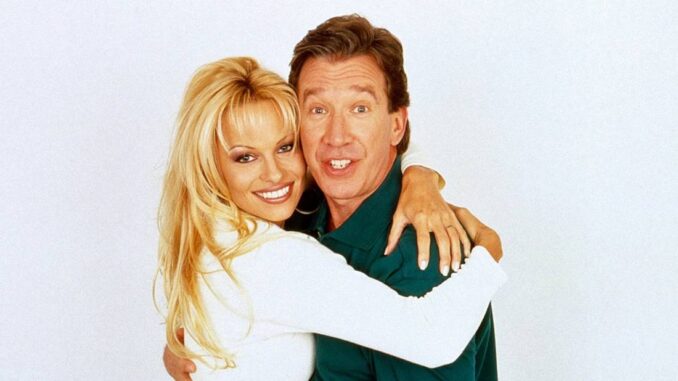
The air around celebrity narratives often feels as thin and brittle as spun sugar, easily shattering under the weight of a new revelation. When Pamela Anderson, in her memoir "Love, Pamela," unspooled a memory from the set of "Home Improvement" – a claim that Tim Allen had flashed her – the sugar-spun air around their public personas didn't just crack; it seemed to explode. The headlines shrieked, the internet buzzed with a familiar, furious energy, ready to assign roles: victim, perpetrator. Yet, in a shocking turn that defied the neat categorizations of our digital age, Anderson, while steadfastly standing by her claim, also offered a peculiar, almost tender defense of Tim Allen. This paradoxical stance was more than a celebrity kerfuffle; it was a tightrope walk over the chasm of public expectation, illustrating the profound complexities of truth, memory, forgiveness, and the human capacity to hold conflicting realities in the same breath.
The initial claim landed like a seismic shockwave. Here was Pamela Anderson, long objectified, often misunderstood, finally reclaiming her narrative. Her memoir was hailed as a courageous act of truth-telling, and the specific anecdote about Allen was immediately absorbed into the larger, vital conversation surrounding workplace conduct and power dynamics. The image conjured – a fluorescent-lit sitcom set, the awkward, unsettling gesture – resonated deeply in a world still grappling with the revelations of the #MeToo movement. For many, this was a clear-cut case, a familiar villain in a story that demanded clear lines drawn in the sand. The public, conditioned to seek justice and accountability, quickly settled into the predictable rhythm of outrage and condemnation.
And then came the dizzying pivot. In subsequent interviews, pressed on the detail, Anderson did not retract. The claim, she insisted, was her truth, a memory seared into her experience. But then, she added layers of astonishing nuance. She spoke of Allen being "nice," "complicated," perhaps "troubled," even asserting, "He's a good guy." The public, poised for further denunciation, stumbled. How could both be true? How could a man who allegedly committed such an act simultaneously be a "good guy"? It was an act of cognitive dissonance, a refusal to paint in the stark black and white that social media narratives so often demand.
This "shocking turn" illustrates a profound discomfort with ambiguity in our culture. We crave simplicity: heroes and villains, right and wrong, clean resolutions. Pamela Anderson, through her seemingly contradictory statements, forced a confrontation with the messy, inconvenient reality that human beings are rarely monolithic. A person can commit an act that causes harm, and yet possess other qualities, other facets to their character, that are not inherently malicious. Her defense wasn't an exoneration of the act itself, but an acknowledgment of the complicated tapestry of a human life, woven with threads both dark and light. It suggested that a single moment, however impactful, does not necessarily define the entirety of a person.
Furthermore, Anderson's stance illuminates the subjective nature of memory and truth. For her, the incident was a specific, undeniable memory, an experience of vulnerability. For Allen, he may genuinely have no recollection, or a vastly different interpretation of the event. The essay isn't about adjudicating their individual truths, but about understanding that these different realities can coexist. Anderson, in her maturity and self-possession, seemed to understand this, refusing to allow public pressure to force her to choose between the validity of her own experience and a more nuanced view of another's character. She offered her truth, but also a space for grace, a quality increasingly rare in the crucible of public opinion.
Ultimately, Pamela Anderson's seemingly contradictory statements reveal a woman who has transcended the simplistic narratives often imposed upon her. For years, she was a symbol, an image, her agency often overlooked. Now, as the author of her own story, she exercises a profound kind of power: the power to define her truth without demanding the total annihilation of another's reputation. It’s a bold refusal to participate in the "cancel culture" hunger for absolute condemnation, instead offering a path, however thorny, towards understanding human complexity. Her shocking turn, therefore, is not a retreat, but an advance into the difficult, necessary terrain where we acknowledge that people are never just one thing, and that even the most uncomfortable truths can be held alongside a surprisingly resilient empathy. It is a powerful illustration of the messy, yet ultimately more human, way to navigate a world that too often prefers its stories neat and tidy.
